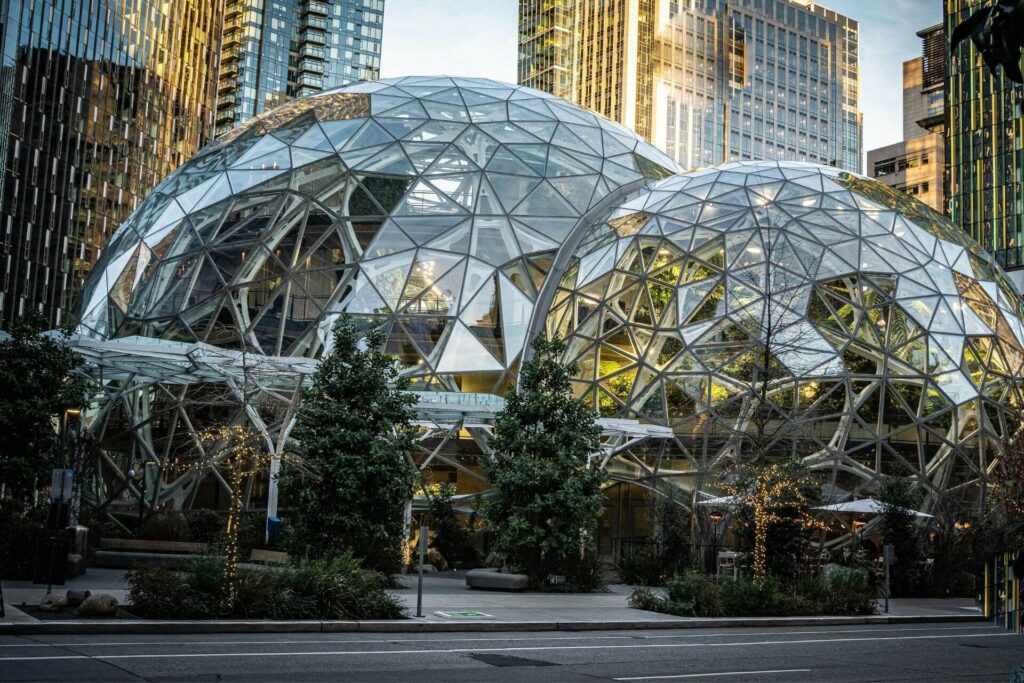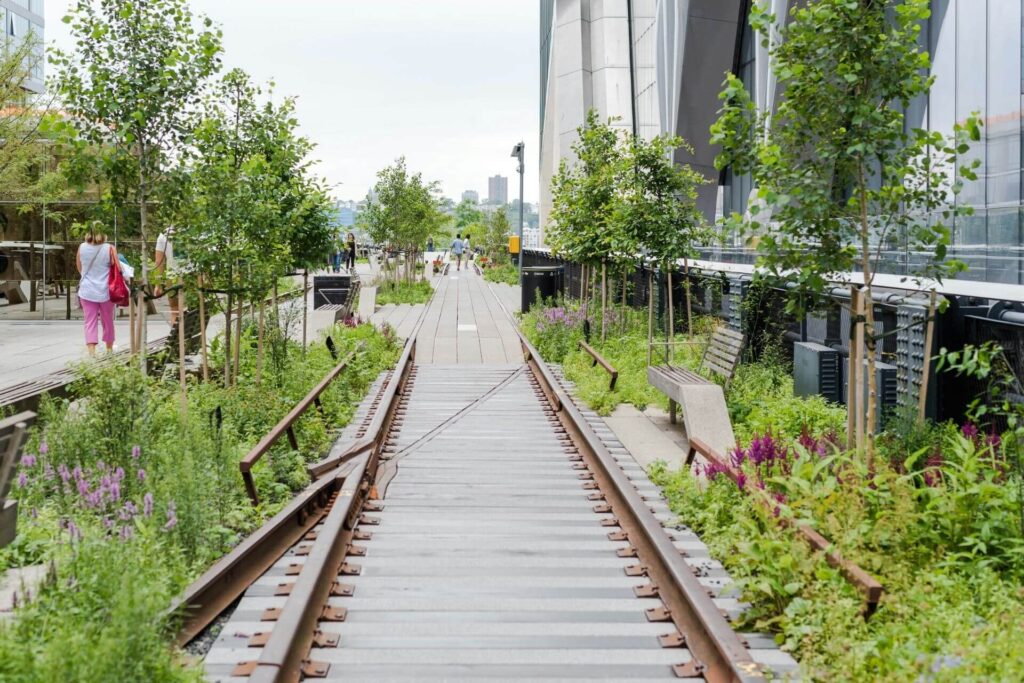Biophilic design is the use of natural design elements in building construction. As cities expand, residents want to maintain a sense of connection to the natural world. Nature-based architecture merges environmental and urban aesthetics to create sustainable, organic spaces celebrating humankind’s harmonious relationship with nature.
Biophilic Design Principles

Biophilic design architects believe in nature’s restorative power and harness it through natural design. The style uses biomaterials and ornamentation found in nature. Many consider Stephen Kellert the pioneer of biophilic design architecture. There are many ways to innovate, but his six elements are the hallmarks of biophilic design:
- Access to nature
- Environmental features
- Natural lighting and open spaces
- Natural processes and patterns
- Organic forms and shapes
- Place-based relationships
Benefits of Biophilia in Architecture

Biophilic design brings some of the natural environment’s benefits inside. The average American spends 90% of their time indoors, where pollutants are higher than outdoors. Biophilia’s incorporation of greenery and more frequent access to the outdoors can positively impact the air quality of indoor spaces. Surveys suggest nature also positively affects mood, reducing stress and increasing happiness.
Depending on the incorporated features, many examples of biophilic architecture are more sustainable since they improve air quality and reduce energy consumption. For example, research shows using plants on roofs can reduce energy consumption by up to 70%, making these buildings more profitable. Sustainable properties can also have a 10%-21% higher market value than unsustainable ones.
Biophilic Design in Commercial Landscape Projects

Commercial spaces that successfully incorporate biophilic design have become famous worldwide. These examples of environmentally conscious architecture continue to pave the way for future commercial landscape projects.
The High Line in New York, New York
The High Line is an elevated public park in Manhattan built on a defunct railway. Architects incorporated microclimates to protect the site’s biodiversity and allow its plants to thrive. Benches all along the High Line invite visitors to sit amongst the foliage. You can also walk along preserved pieces of the railway — a perfect representation of biophilia’s merging of urban spaces and environmental design.
The Amazon Spheres in Seattle, Washington
In its innovative workplace-greenhouse hybrid, the Amazon Spheres holds over 40,000 plants from more than 30 countries. All three domes are covered in glass pentagonal hexecontahedron panels, creating a seamless transition between the urban landscape of Seattle and the green environment inside.
Terminal E in Atlanta, Georgia
Ambius — a company specializing in biophilic design — turned Terminal E of Atlanta’s International Airport into a green reprieve from the hustle and bustle. The lounge features a 50-year-old bonsai tree and a vertical green wall, inviting travelers to soak in nature’s peace amidst their jet-setting. Designers specifically included moss walls because they offer a big impact with minimal necessary maintenance, while the water features help reduce stress.
The Aruma Split Garden in Jakarta, Indonesia
The Aruma Split Garden is a multilevel commercial garden inspired by Indonesia’s tropical landscape. It houses restaurants, a mezzanine bar, and a beer garden. In addition to incorporating a green aesthetic, the Aruma Split Garden’s designers minimized the building’s ecological footprint by using sustainable materials and energy-efficient methods.
The Jewel in Singapore
The Jewel in Singapore’s Changi Airport has become a famous example of biophilic design. The terminal is surrounded by a glass and steel dome, while inside, visitors can admire the Rain Vortex — the world’s tallest indoor waterfall at just over 131 feet tall.
However, the soaring trees may have you not fully convinced you’re indoors. The airport has three garden-filled levels and takes biophilic design to the next level by incorporating tropical sounds like bird songs and insect noises.
Merging Nature and Artificial Design
Biophilic design is only growing in popularity because it promotes harmony between urban design and the environment. The more people inhabit the planet, the more biophilia in structures becomes a necessity. Commercial project developers use this innovative style to encourage people to connect with nature, no matter where they are.

Leave a Reply